Having read part one of my Colca Canyon trek series, you’re probably asking yourself,
“so where/who is this unusual guide of which you speak?”
Well, I promise all will become clear to you very soon, so stick with me.
I’m not too sure how we managed it (it may have had something to do with the fact that when the heat of the clay oven had died down the previous evening, the warmest place to be at Pachamama Backpackers was beneath the many layers of blankets they provided you with), but we were fuelling up on a hearty breakfast of eggs and pancakes by 6:30am. What’s more, we were by no means the first guests to be doing so.
Colca Canyon days start almost as early as those on the Inca Trial trek.
Our chosen route through the canyon would take us down through San Juan de Chucco and on to Tapay, where we’d spend the night. Not many of the tour groups make it as far as Tapay (they usual head straight down to the oasis at Sangalle and spend the night there) so we were looking forward to a proper little off the beaten path adventure.
We left the hostel at just before 8am, armed with a crude map and some rather sketchy directions regarding the location of the starting point of our trek. As soon as we turned on to the main road heading out of town (from where we would pick up the path down into the canyon) we were joined by a rather scruffy looking dog, who happily plodded alongside us as we walked. We assumed he’d lose interest once we’d ventured beyond the boundaries of the town.
Our assumption quickly made us question the directions we’d been given by the hostel owner, which simply instructed us to take a left turn alongside a football pitch and follow the signs pointing towards the Mirador de San Miguel. Considering how small Cabanaconde is (it’s got a population of just 2700) we probably didn’t need to walk very far or for very long in order to have left the town far behind us, a fact that made us realise that we had absolutely no idea what sort of distances were involved in order to reach said football pitch.
We’d been walking for some time, our hairy companion still in tow, when we decided it might be a good idea to consult our map, in order to try and ascertain where we were in relation to where this elusive football pitch was supposed to be.
As we did so an elderly lady approached with her two donkeys, and enquired,
“de dónde va?”
We explained that we were looking for the path to the Mirador de San Miguel, in order to reach San Juan de Chucco. As luck would have it, she was heading that way herself, and suggested that we follow her. She then proceeded to ask why we were trekking the route without a guide.
Up to this point, and in spite of our incredibly simple map and questionable instructions, we believed that the routes through the canyon would be well signposted and that, in the words of the gentleman at the Colca Trek office, it was nye on impossible to get lost.
However I will admit that the old lady’s question had worried me a little, and I imagined how much trouble I’d be in with Stu, were we to lose our way through a hot, arid, and sparsely-populated part of Southern Peru. He’d tell me that I should have researched it better; that we should have gone with a guide, and as a result we’d fight so much I’d wish we had.
As we turned off the main road and our canine companion proceeded to follow us, the old lady joked, “él es su guía” – he is your guide. Little did we know at this stage just how right she would turn out to be.
As we walked the lady asked where we planned to stop for lunch, and where we would be sleeping that night. When I informed her that we were staying in Tapay overnight, she expressed her surprise that we were going that far.
Considering that we’d contemplated hiking all the way to Sangalle in one day (via Tapay), Tapay in itself wasn’t that far in my opinion. What’s more, bearing in mind the distances that a lot of village-dwellers from developing countries cover on a daily basis, in order to simply make a living and look after their families, her surprise took me by surprise.
Once again, I began to question just how well I’d understood both the gentleman from Colca Trek and the owner of Pachamama Backpackers, and how accurately I’d read the map we’d been given.
Still, I remained optimistic. After all, we had a few years on her and we weren’t trying to navigate narrow, uneven mountain paths with a pair of donkeys.
As we passed the mirador (viewpoint) and headed down into the canyon, we caught sight of the oasis, a verdant area of land nestled at the base of the valley. It didn’t look that far away, and immediately I was reminded of that scene in Labyrinth where Sarah first meets with David Bowie’s character, Jared, and looks across to the castle at the centre of the labyrinth. “It doesn’t look so far”, she remarks as she stands up to the challenge he has set for her, of rescuing her baby brother from the Goblin King. But looks can be deceiving where sorcery is concerned.
Hopefully there wouldn’t be too much sorcery involved in our quest, but – witchcraft aside – I suspected the oasis was a lot farther away than it appeared to be.
We thanked the lady for her help and as we passed her and her two donkeys, she offered us a few words of advice:
- Always keep to the centre of the path – loose rocks and uneven, unstable terrain can make walking mountainside as dangerous as walking too close to the edge.
- Always keep mountainside when donkeys are passing (but we already knew that from our Inca Trail trek).
We got so far down into the dusty canyon when the rising heat forced us to stop and peel off a few layers. Instead of passing us, and in spite of our invitations for her to do so, the lady waited whilst we stripped down to our shorts and t-shirts and covered our exposed skin with sunscreen.
However, sometime later her and her donkeys passed us with no hesitation. Much as we’d appreciated her help, we felt a bit rushed (I like to be able to stop regularly to take photos while I’m trekking) with her and the two donkeys on our tail, so it was quite nice to be alone again – just the three of us.
Yes, that’s right, our four-legged friend was still with us, stopping whenever we stopped, or trotting along 100-200 metres ahead of us and then resting in the shade whilst we caught up. Every time we stopped to quench our own thirst we would cup our hands and pour a little water inside for him to drink.
We arrived at the hanging bridge in approximately two and a half hours, and – exactly as our instructions had stated – there was a uniformed gentleman and his dog there to check our ticket and take down our details in his register.
Just after the bridge our instructions advised us of a short-cut. The path continues straight on, parallel to the Rio Colca, but there is a steeper track which leads off to the left and uphill. We decided that this must be the short-cut mentioned in our instructions , so we followed the track uphill.
After approximately 5-10 minutes we came to a clearing where the track split, but our instructions gave us no indication regarding which route we should take. Fortunately our furry friend did. He bounded off on to the path ahead, stopped, looked at us and whined.
He clearly wanted us to follow that trail and, having no guidelines other than those of a dog who’d found us just hours beforehand and stayed by our sides all the way down to San Juan de Chucco, we decided to trust him.
The trail lead us away from the cliff edge and along a narrow track, walled on one side and with long grass, dense vegetation and fruit trees on the other. Before long we reached another clearing containing a small wooden hut and none other than the lady we’d met earlier with the two donkeys. She was manning a lone stall stocked with bottles of water, cans of Fanta, Sprite, Coke and beer, chocolate, and bananas and tangerines, along with more drinks cooling in a washing up bowl filled with iced water.
Grateful for her earlier help (but equally puzzled about how she’d managed to re-appear on the path we had chosen to take and set up shop in time for our arrival), we purchased a Snickers bar and two tangerines, promptly followed by another three tangerines to compensate for the fact that she didn’t have change of 10 soles – apparently.
We offered our faithful hound a chunk of Snickers and a segment of tangerine, both of which he refused in favour of disappearing into the undergrowth and gorging on rotting avocados that had fallen from the trees above.
Whilst purchasing our snacks the lady had suggested we visit La Posada de Gloria for lunch. Despite not feeling particularly hungry, we thought we’d stop for a drink and well-earned rest. The gentleman at La Posada de Gloria didn’t seem too bothered that we weren’t ordering food, so we sat down with a beer and a bottle of water respectively (guess who had the beer? Clue: it wasn’t me!) and watched a tiny black and white kitten playing in the vegetation whilst our faithful friend lay under our table in the shade.
Our instructions gave us directions to Tapay from Roy’s House, which we’d never arrived at (presumably because we’d taken a small diversion to La Posada de Gloria), so we were a little confused about which route we should take following on from our rest-stop. It would have been rather ironic if we’d have had to backtrack to the place where we’d taken the short-cut.
Fortunately the gentleman who served us our drinks pointed us in the direction of a small path that lead uphill behind the restaurant (read: a small bamboo hut containing two tables and a bunch of plastic chairs).
We climbed steadily, glancing back as the houses in the village grew tinier and tinier with every step we took. After approximately five minutes we were stopped in our tracks when we heard a loud boom followed by a rumbling sound. Knowing that earthquakes are not uncommon in Peru, and having talked earlier about what a dangerous place the Colca Canyon would be to get stuck in, in the midst of one, we both looked at each other nervously, both of us knowing what the other was thinking but being too afraid to say it.
Once our logical minds took over our panicked and confused thoughts, we toyed with the idea of thunder (nope, not a cloud in the sky) or an avalanche (unlikely), but finally settled on the idea of blasting (even though we’d not yet seen any signs of work being done on the roads – or in fact any roads).
The lady who was walking up the path behind us appeared to be local (no rucksack or walking shoes in sight) and didn’t seem in the slightest bit bothered by the rather unnerving noise, so we decided to take her apathy as a sign of our safety. We let the lady pass us, and then continued our journey uphill.
A little further along the track forked, and off to the right we heard the threatening sound of barking dogs. Despite having paid stupid amounts of money for rabies vaccinations before we left England (which we later discovered doesn’t actually vaccinate us; it just buys us time if we’re bitten), we’d still have to make it to a hospital within days following an attack, so we’re rather wary of barking dogs, and will never voluntarily take a pathway which would lead us into the jaws of these potentially dangerous creatures.
Fortunately our four-legged friend saw them off with a few angry barks in response, and as a result they didn’t try to come any closer. Our loyal hound clearly didn’t think we should be taking the right-hand fork though and trundled off to the left, looking back to ensure our presence behind him.
The path continued to climb quite steeply and we welcomed the shade from the trees overhead. We also welcomed the sight of a small reservoir almost as much as our furry friend, who drank from it, bathed in it and then shook himself vigorously in the hot sun, covering us from head to toe in droplets of refreshingly cool water.
And still we climbed. And climbed.
Before long we were looking down upon the tree cover, and whilst the views were incredible, there was now no respite from the relentless heat of the early afternoon sun.
I didn’t understand how the path could still be climbing. According to the map that was printed on the back of our 70 soles entry ticket, Tapay sat at 2400 metres above sea level, just 200 metres above San Juan de Chucco. There was no way on God’s earth we’d climbed less than that.
We began to get concerned that we’d missed a turning some time back, that the past 60-minute leg workout had all been in vain. But we immediately dismissed that possibility, convinced that our faithful guide would have alerted us if we were on the wrong track. It may sound crazy but since our first meeting approximately six hours beforehand we had grown fond of our gentle, protective and loyal little mongrel, and had really begun to trust him. For that reason we couldn’t possibly entertain the idea that he’d let us down.
We had no option but to continue uphill.
The path became wider but more unstable, large rocks having lodged themselves in the terrain underfoot. I longed for some shade.
Normally altitude brings cooler temperatures with it, but the heat was killing me so much I was gulping water down every five minutes. Bearing in mind that ordinarily I’m a bit like a reptile when it comes to treks and can get by on very little water, this was worrying me somewhat. I was obviously incredibly dehydrated, and if we didn’t arrive in Tapay very soon I’d run out of water at a time that my body desperately needed it.
The distance was about right (we’d been walking for about one hour and 45 minutes since leaving San Juan de Chucco), but the gradient of the climb wasn’t, and if we weren’t on the right track we’d seen no signs to suggest where we might be instead.
Just at the point that we were getting ready to turn back, signs of civilisation slowly began to re-appear, firstly in the form of a small clump of houses nestled on the mountainside, and secondly in the form of a T-junction that seemed to correspond with one mentioned in our directions. To the left was signposted ‘Coshñirwa’, which meant that the right-hand fork – although not signposted – must lead to Tapay.
It lead us along a narrow path at the very edge of the ravine, past a decorated crucifix made from bound grasses and plants, and to the base of a wide set of deep stone steps. Still no sign of Tapay.
We took another look at our crude map, worried now that we’d actually passed Tapay and were heading to the next village of Sallani. We checked the time. Two hours and 10 minutes had passed since we’d left San Juan de Chucco, which meant that – considering we had stopped for quite a few breaks – we were pretty much spot on time for arriving into Tapay at any moment. Maybe Tapay was at the top of those challenging steps that lay ahead of us. Maybe we just couldn’t see it yet.
As we neared the top our tempers were fraying. When you’re desperately dehydrated and have almost run out of water, you haven’t eaten anything more than a few tangerines and half a Snickers bar for approximately eight hours, every single muscle in your legs is burning, and you have no idea where you are, how far away the nearest village is, and whether you’ll actually make it there before nightfall, hiking really begins to lose its enjoyment.
As we neared the top of the steps, the climb shallowed into a rocky trail, and ahead of us we could see a large stone arch and a few stone houses in the distance. As we neared the arch, we could just about make out some words engraved across the top of it.
They said: ‘Tapay’.
We quietly rejoiced, but we could not rest completely until we’d found some water, food and a bed for the night. We wondered what would happen to our faithful hound when we did. We didn’t want to leave him.
As we wandered into the village, we noticed that not only was it devoid of other tourists (which was good), but that it was also devoid of residents (which was not so good). This charming mountain village was like a ghost town.
We managed to find one of the accommodation options suggested in our guide, La Posada del Colca, its rusty sign having fallen off its hinges, hanging at an angle. The door was locked and metal gates had been placed across the front of it. We stood on a rock and peered into the garden to its side. The lawn had fairly recently been mowed and a football lay abandoned on the grass.
“Hola!”, we called.
“Buenas tardes!”
No reply. Not a single leaf rustled, nor curtain twitched. There was clearly no-one at home.
We wandered further up into the village, following the directions to Hospedaje Isidro – the second and only other accommodation listing in our guide. Hospedaje Isidro was most definitely not in the location that our directions suggested it should be, and a wander through the walled lanes beneath Tapay’s church brought with it no joy other than confirmation that there was life in the village. At least fairly recently. We found our furry friend playing with what we initially thought to be a ball of some sort, until we drew a little closer and realised it was a cuy (guinea pig), recently deceased, its body inflated.
By now we were starting to panic again. The whole village seemed abandoned, and the sun had already disappeared from the tops of the mountains. Before long darkness would be upon us and the temperatures would drop dramatically. We desperately needed to find a bed for the night.
I’m not sure how we missed it on the way up to the church, but on our way back down we noticed an inconspicuous wooden sign with the words ‘hospedaje’ written upon it, pointing down a walled lane off to our left. We had no idea what sort of accommodation we’d find at the end of it and to be honest we weren’t expecting anything more than the most basic of shelters with a mattress on the floor. We weren’t even sure the place would be open or whether there would be anyone around to let us in.
We were therefore pleasantly surprised when we were greeted by a plump, rosy-cheeked lady who showed us to a lovely little bamboo bungalow with two large beds, and an electric reading lamp (yes there was electricity!), and then promptly informed us that they had showers “con agua caliente” (hot water, no less). I was a little dubious about the latter claim, but I certainly wasn’t going to pass up the opportunity to give them a try.
“Sirven comida?”, I enquired hopefully.
My question received an affirmative response. She had alpaca (which immediately caught Stu’s attention), beef or chicken.
“Pero soy vegetariana”, I stated.
Not at all puzzled or deterred, she asked,
“come queso?”
“Si, claro”, I smiled.
She didn’t seem in the slightest bit bothered that we had a dog in tow, who waited patiently outside the shower block (a wooden hut with hot and cold taps cemented on to the wall) whilst we tried out the hot water – which was warm, at least. However it was quite a bizarre experience having a shower whilst chickens clucked around my feet.
We ate dinner around a long wooden table outdoors, joined by the Norwegian couple we’d met briefly at breakfast – the only other guests at El Encanto Maruya. The cozy smell of woodsmoke lingered in the crisp mountain air as we munched our way through warming bowls of quinoa soup (the best I’ve had in Peru) followed by huge plates of meat, vegetables and spaghetti con queso.
Through our brief conversation with the Norwegian couple over dinner, we discovered that Tapay actually sits at 3100 metres above sea level (the gentleman had an altimeter; he obviously takes his hiking seriously), so we’d actually climbed 900 metres since leaving San Juan de Chucco!
Our loyal hound sat patiently at our feet while we ate, accepting a few morsels of food that I managed to feed him on the sly. Despite being beyond ravenous when I sat down to eat, I quickly got full and had to leave a large portion of the huge plate of spaghetti I’d been served. I apologised to the lady, ” lo siento pero estoy muy llena”, and thanked her for the lovely meal.
What she did next both surprised and touched me. She cleared the table, removing the plates and leftover food. She then took them across to her outdoor kitchen, where she scraped the remaining meat, vegetables and spaghetti into a large metal bowl, a bowl which she subsequently presented to our very grateful canine companion – along with a bowl of water. Needless to say, it didn’t last long.
When we retired to bed our guide followed us upstairs (there were about 5 or 6 stone steps that lead up to the sleeping quarters), disappeared around the back of the bungalow, barked at a few things (no idea what) and then proceeded to take up residence outside of our front door. The temperatures had plummeted by now and I felt incredibly guilty leaving him out in the cold.
But what hurt the most was that, as I closed the curtains and turned out the lights, I wondered whether that was the last time we’d ever see him.
Stay tuned for the third and final Colca Canyon instalment in seven days time!
***
If you like this article, please follow along on Facebook, Twitter, or Google+ or you can look me up on Instagram or Pinterest too!
This is part of the #SundayTraveler link-up, hosted by Chasing The Donkey, Pack Me To, A Southern Gypsy, The Fairytale Traveler, and Ice Cream and Permafrost.


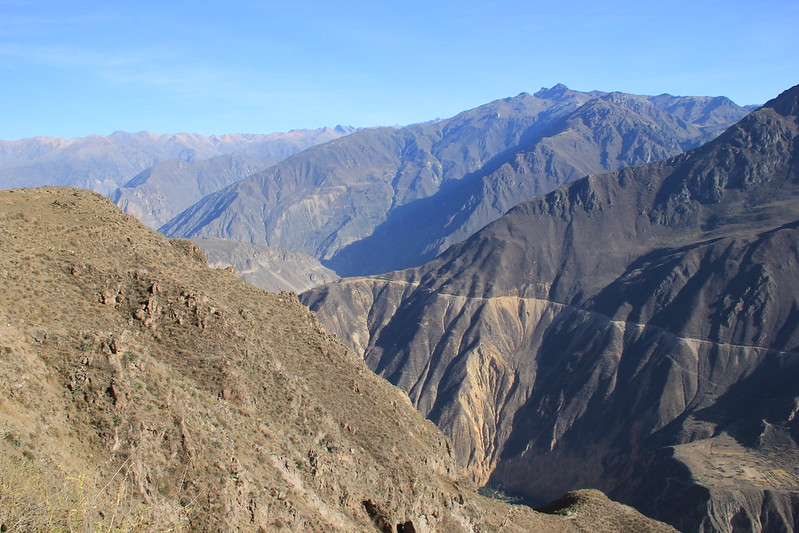
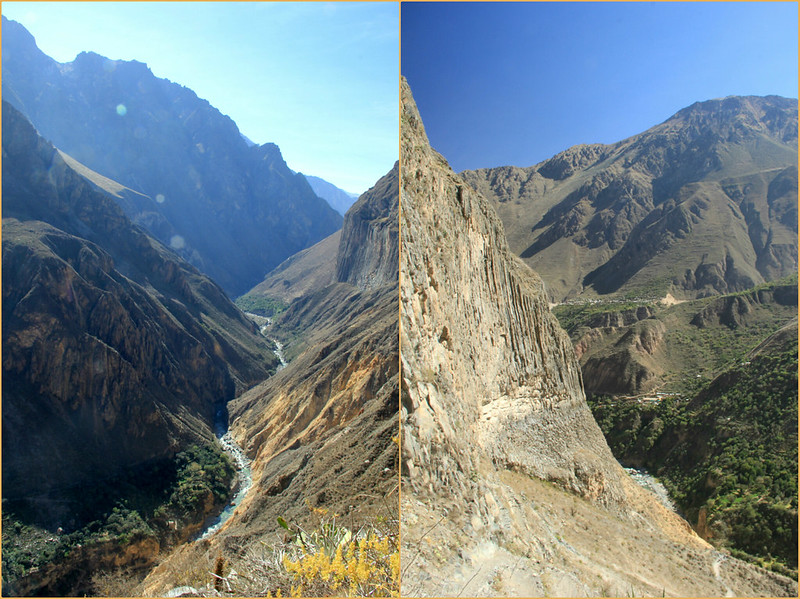
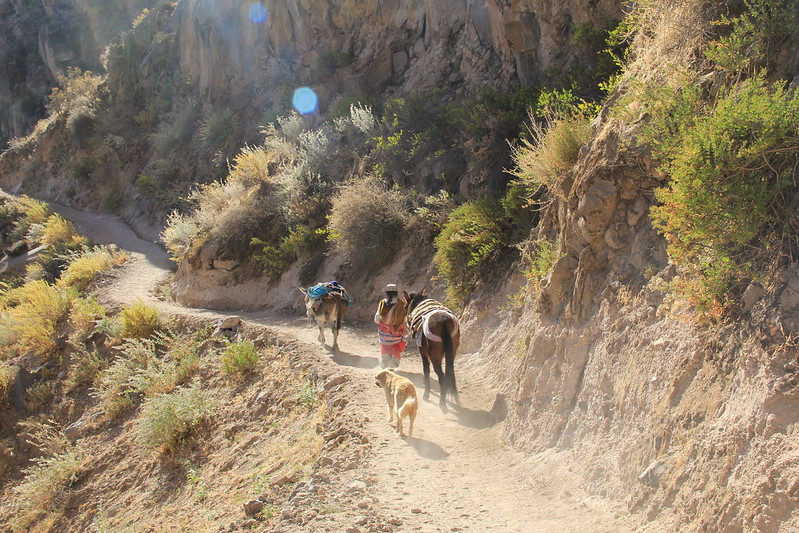
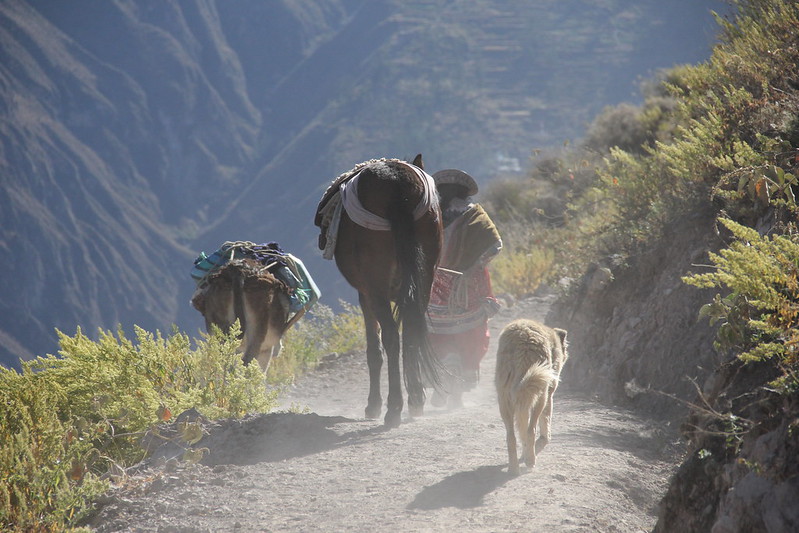
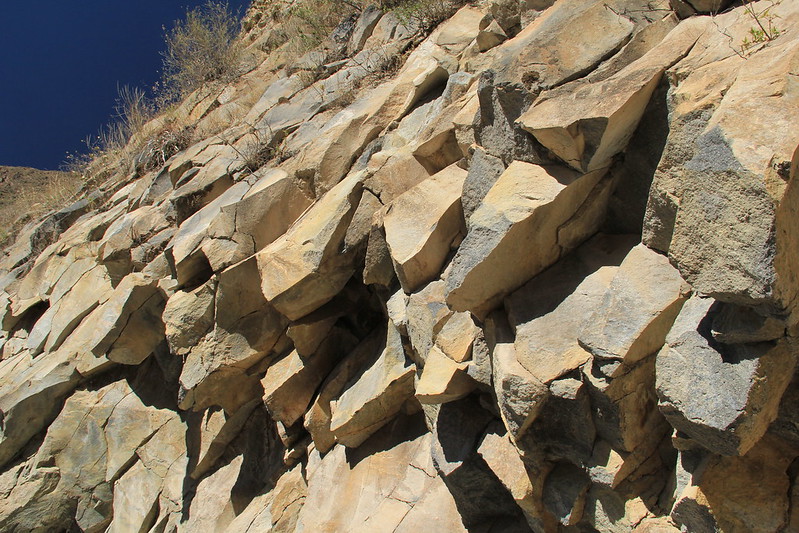
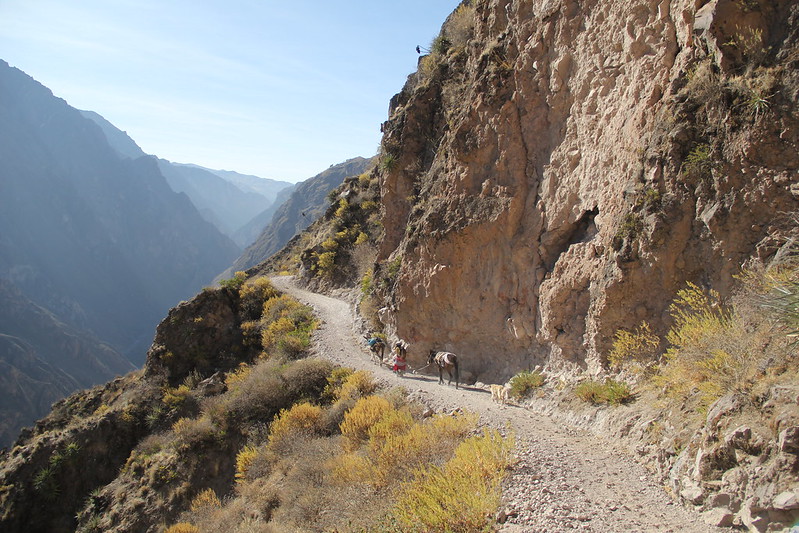

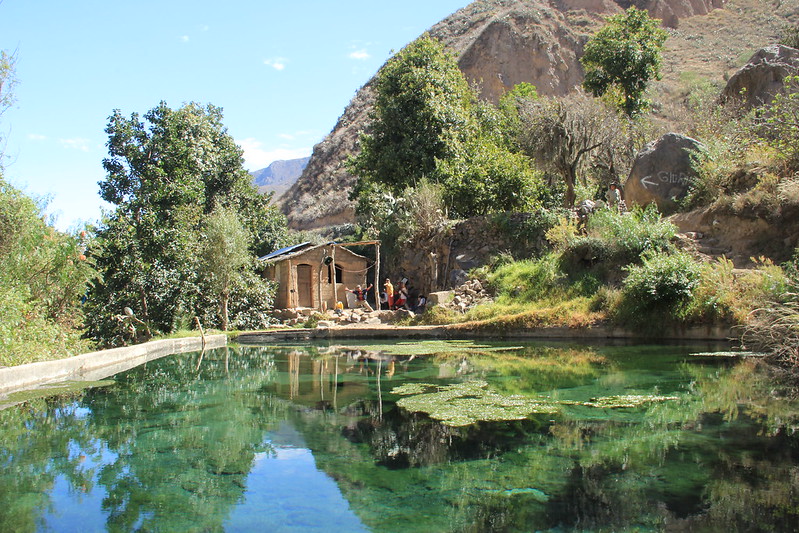
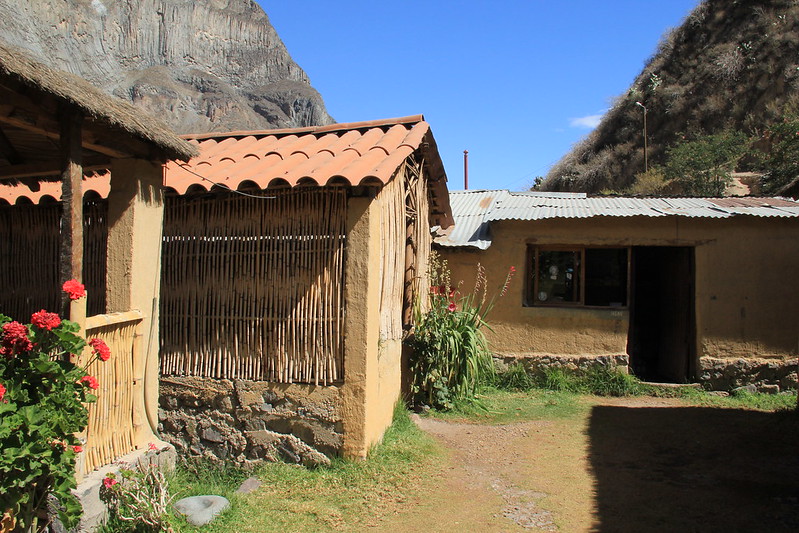
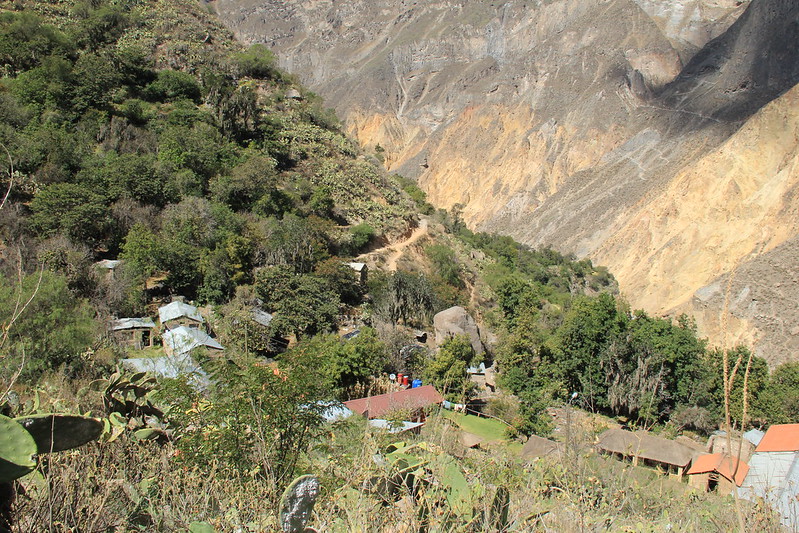
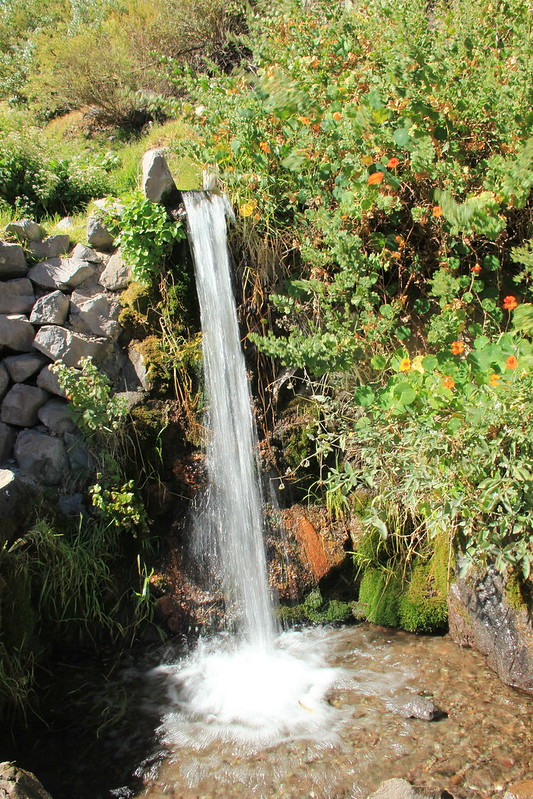
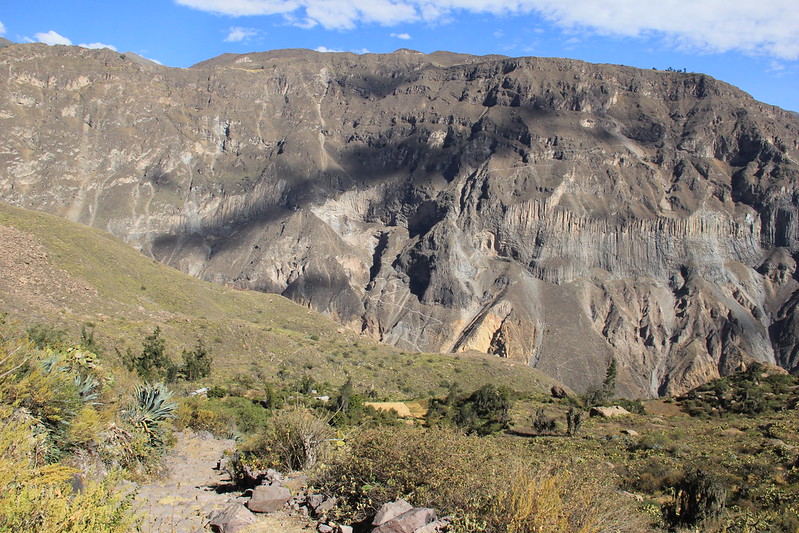
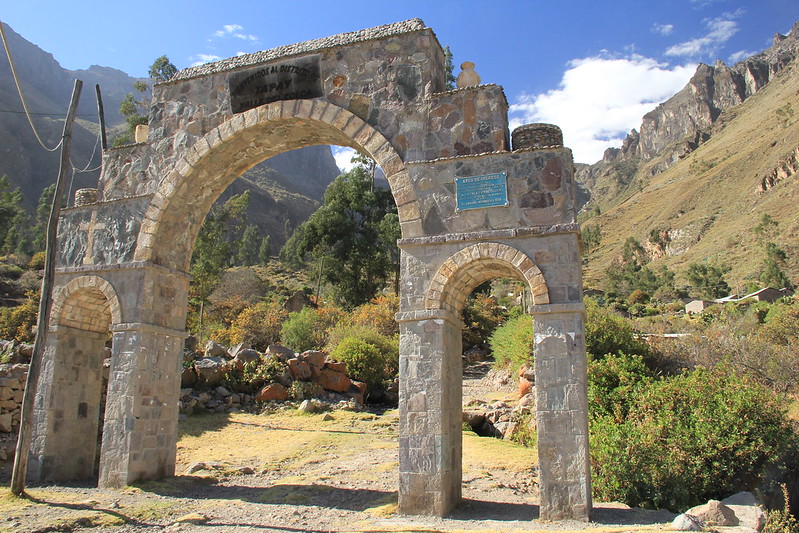
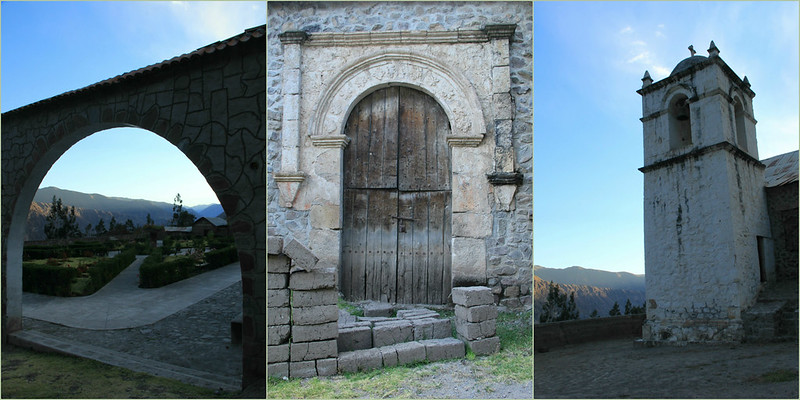

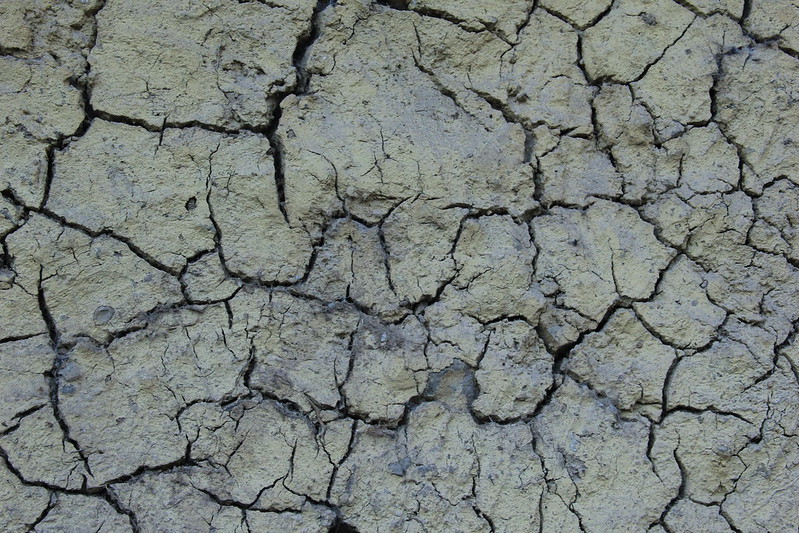

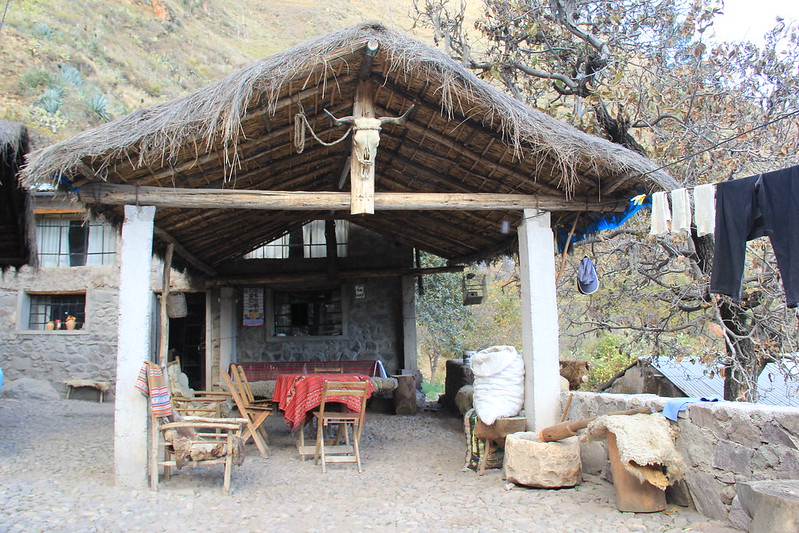
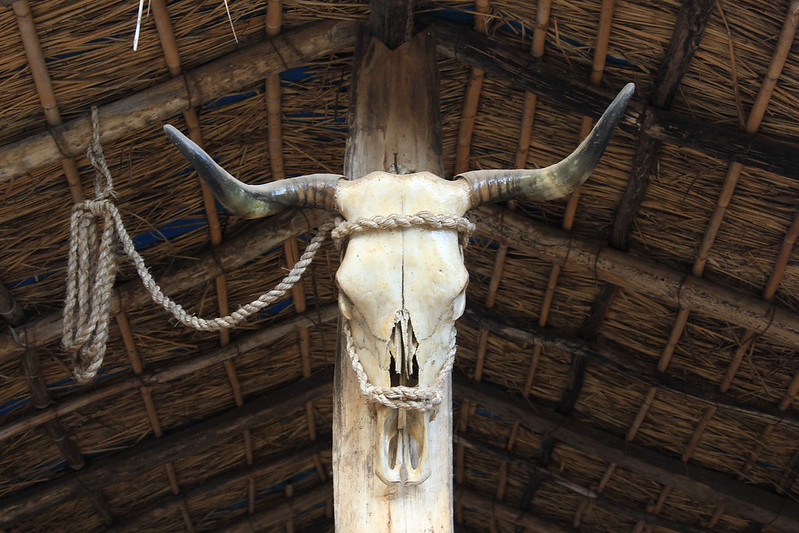
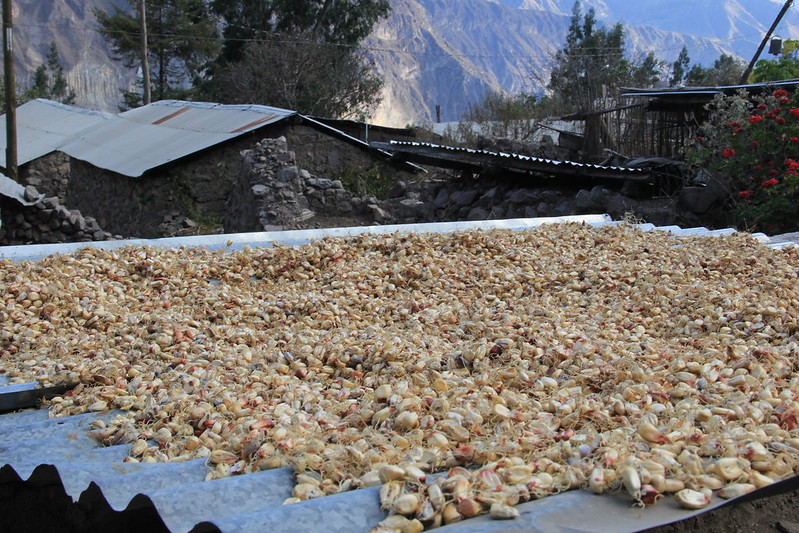
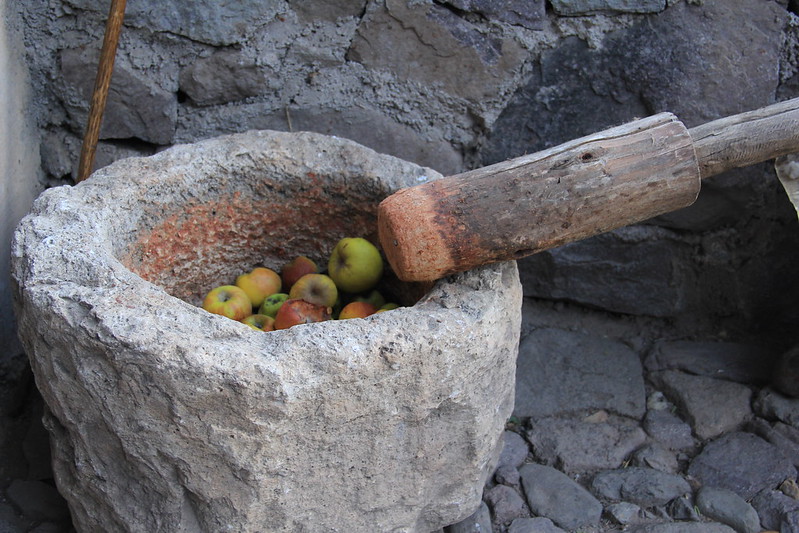
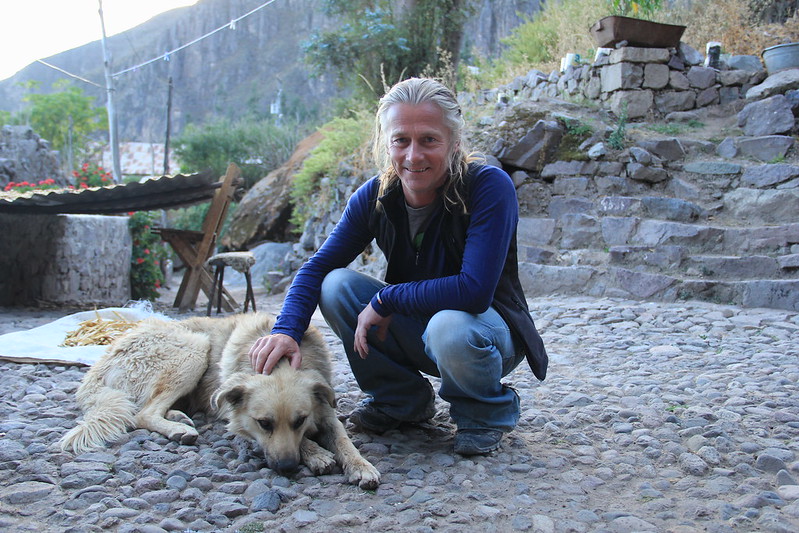
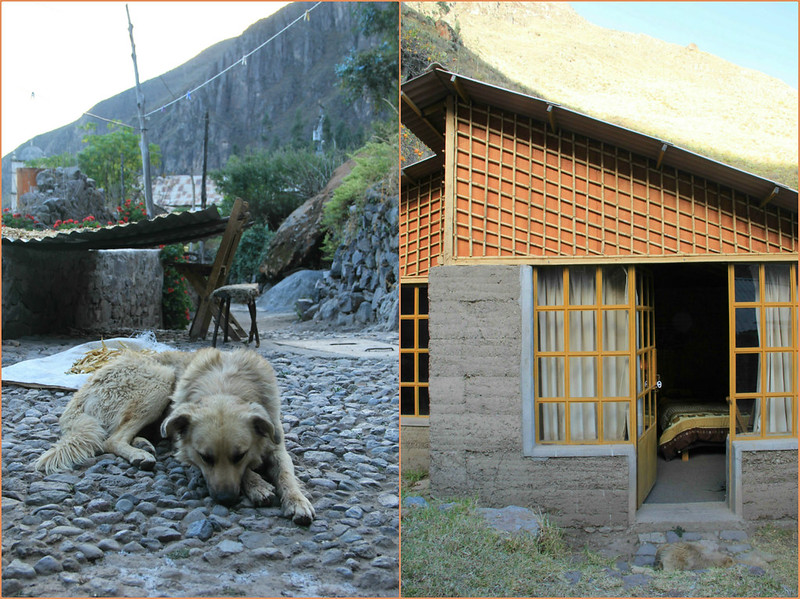





4 Comments
I was enraptured the entire post! I love how the trip was made even more special by the fact that the dog guided you guys the entire way. I would have adopted him, lol! There were some really tense moments there, and that is why I’m not a fan of long hikes and would rather read about it! I’m glad everything worked out okay in the end. Looking forward to the last installment!
Aw, thanks Anna 🙂 I honestly wanted to adopt our four-legged guide too, he was adorable!
Such a beautiful place!
I agree, it definitely is a stunning part of the world 🙂